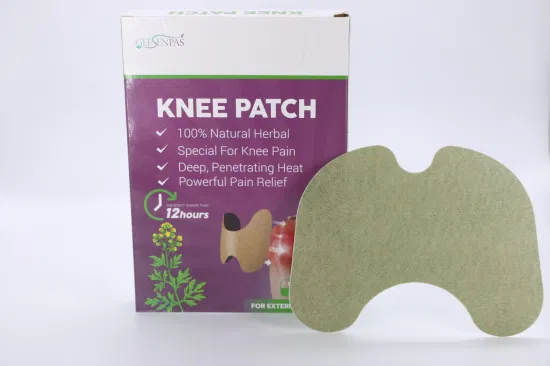Living with knee pain can be frustrating—whether it’s from arthritis, overuse, injury, or age-related wear and tear. While there are many treatments available, not everyone wants to take pills or apply messy creams multiple times a day. That’s where knee pain relief patches come in.
These patches are growing in popularity thanks to their ease of use, targeted action, and long-lasting relief. In this guide, I’ll walk you through how these patches work, the best types for different kinds of pain, and what to look for when choosing one.
🩹 What Are Knee Pain Relief Patches?

Knee pain relief patches are adhesive products that deliver pain-relieving ingredients directly through the skin and into the underlying tissue. They are typically applied to the front, side, or back of the knee—wherever pain is most intense.
Instead of treating your whole body like oral painkillers, these patches offer localized, controlled, and longer-lasting relief right where it’s needed most.
🔍 How Do Knee Pain Patches Work?
Most patches use transdermal technology, which means the medication or natural ingredients pass through your skin to reduce inflammation, numb nerve endings, or improve circulation.
Common mechanisms include:
- Blocking pain signals from nerves
- Reducing inflammation and swelling
- Relaxing tense muscles or tendons
- Soothing the area with heat or cooling sensations
Depending on the ingredients, some patches work quickly to relieve pain, while others are designed for gradual relief over 8 to 24 hours.
🧠 Benefits of Using Knee Pain Relief Patches
Here’s why these patches have become a go-to solution for knee discomfort:
✅ Targeted Action
You place the patch directly on the painful area, ensuring direct absorption and maximum relief at the source.
✅ Non-Invasive and Drug-Free Options
Many patches contain natural ingredients or topical agents, making them ideal for those who want to avoid heavy medications or injections.
✅ Long-Lasting Effects
Unlike creams that need frequent reapplication, most patches work for several hours, making them perfect for workdays or sleep.
✅ Portable and Discreet
Slim, flexible, and easy to wear under clothing—they can be used at home, at work, or even while traveling.
✅ Less Systemic Impact
Because they’re applied locally, pain relief patches minimize side effects that are often associated with oral medication like upset stomach, drowsiness, or liver strain.
🔬 Different Types of Knee Pain Relief Patches (And Who They’re For)
There isn’t a one-size-fits-all solution. The best patch for you depends on the cause and intensity of your pain. Let’s look at the most popular types:
1. Lidocaine Patches
- How they work: Numb the skin and block nerve pain signals
- Ideal for: Arthritis, nerve pain, post-surgical recovery
- Popular Brands: Aspercreme, Salonpas, Lidoderm
2. Capsaicin Patches
- How they work: Derived from chili peppers, capsaicin reduces pain by depleting substance P (a pain messenger in your nerves)
- Ideal for: Osteoarthritis, chronic pain, nerve sensitivity
- Note: May cause a burning or tingling sensation initially
3. Menthol or Camphor (Cooling) Patches
- How they work: Provide a cooling effect that numbs the area and improves circulation
- Ideal for: Sports injuries, tendonitis, swelling, overuse
- Great for: Athletes or people on their feet all day
4. Herbal or Natural Patches
- How they work: Use herbal ingredients like turmeric, ginger, or eucalyptus to reduce inflammation and soothe pain
- Ideal for: Mild arthritis, early-stage joint discomfort, holistic healing
- Bonus: Often more skin-friendly and free from synthetic chemicals
5. NSAID (Anti-Inflammatory) Patches
- How they work: Deliver medications like diclofenac directly to the inflamed area
- Ideal for: Osteoarthritis, tendonitis, moderate to severe inflammation
- Note: May require a prescription in some countries
🧴 How to Use Knee Pain Relief Patches Correctly

To maximize the effectiveness of any patch, follow these simple but important steps:
- Clean and dry your skin before applying the patch
- Apply to the most painful area of the knee—avoid bony areas or wounds
- Press firmly for 10–30 seconds to ensure good contact
- Wear the patch for the recommended time (usually 8–12 hours)
- Remove and discard—do not reuse unless it’s reusable by design
- If skin irritation occurs, remove immediately and wash the area
⚠️ Common Mistakes to Avoid
- Don’t apply patches over cuts, bruises, or open wounds
- Avoid using a heating pad or hot water bottle over a patch
- Don’t stack multiple patches unless advised by a doctor
- Never sleep with a patch on beyond the recommended time
🛒 Best Knee Pain Relief Patches in 2025 (Top Picks)
Here are a few top-rated options based on user reviews and effectiveness:
| Product | Main Ingredient | Best For | Duration |
| Salonpas Pain Relief | Lidocaine + Menthol | Muscle pain, arthritis | 8–12 hours |
| ThermaCare HeatWraps | Heat therapy | Stiffness, tension | 8 hours |
| Tiger Balm Medicated Patch | Herbal formula | Mild chronic pain | 8 hours |
| Voltaren Patch (Rx) | Diclofenac (NSAID) | Inflammatory joint pain | 12 hours |
| Icy Hot Max Patch | Menthol | Overuse injuries | 8 hours |
🩺 When to Consult a Doctor
Knee pain patches are helpful, but they’re not a permanent cure. If your pain:
- Lasts more than 2 weeks without improvement
- Gets worse over time
- Involves swelling, redness, or locking
- Affects your daily mobility
…you should speak to a healthcare provider. You may need an X-ray, MRI, or physical therapy for long-term care.
FAQ’s
1. Do knee pain relief patches really work for arthritis pain?
Yes, many people with arthritis find relief using knee pain patches, especially those with ingredients like lidocaine, capsaicin, or NSAIDs. These patches help reduce inflammation, block pain signals, and offer localized comfort without needing oral medication.
2. Are there any side effects of using knee pain patches?
Side effects are usually minor and may include skin irritation, burning sensation (especially with capsaicin), or allergic reactions. Always do a patch test first, and never apply on broken or sensitive skin.
3. Can I wear a knee patch while sleeping?
Yes, most patches are safe to wear during sleep, especially long-lasting patches designed for overnight use. Just make sure not to exceed the recommended duration, and avoid patches that heat up if you’re a sensitive sleeper.
4. How often should I use knee pain relief patches?
This depends on the patch type. Most over-the-counter patches can be used once daily for 8–12 hours. Always follow the product instructions or consult a doctor for long-term use, especially if your pain is chronic.
5. Which patch is best for natural knee pain relief?
For natural options, look for herbal or plant-based patches containing ingredients like turmeric, eucalyptus, ginger, or menthol. These are great for mild to moderate pain and are often preferred by those avoiding synthetic chemicals.
Final Thoughts
Knee pain relief patches offer an effective, non-invasive, and easy way to manage discomfort without the hassle of oral medication or frequent applications. They’re perfect for people dealing with arthritis, sports injuries, tendonitis, or everyday knee aches. Whether you prefer the power of menthol, the soothing nature of herbs, or the numbing effect of lidocaine, there’s a patch out there that can help you get back to moving comfortably—day or night.
Related Post
- Zimatejigemo – Unlocking the Fusion of Creativity, Identity, and Innovation!
- Tinaypimatelate – The Revolutionary Concept Shaping the Future of Innovation!
- Limhuloxidpov – A Complete Guide to Understanding This Unique Concept!
- Zaxtexporoz – Exploring the Emerging Concept of Innovation and Digital Transformation!
- Lekulent – The Breakthrough Wellness Solution Taking the Health World by Storm!






